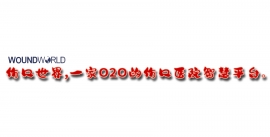文献精选
Abdel‑Salam Abdel‑Aleem Ahmed1 · Sherif Eltregy1 · Mahmoud Ibrahim Kandil1
Received: 7 June 2022 / Accepted: 4 August 2022 / Published online: 16 August 2022
© The Author(s) 2022
Abdel-Salam Abdel-Aleem Ahmed
该Email地址已收到反垃圾邮件插件保护。要显示它您需要在浏览器中启用JavaScript。;
该Email地址已收到反垃圾邮件插件保护。要显示它您需要在浏览器中启用JavaScript。
Sherif Eltregy
该Email地址已收到反垃圾邮件插件保护。要显示它您需要在浏览器中启用JavaScript。;
该Email地址已收到反垃圾邮件插件保护。要显示它您需要在浏览器中启用JavaScript。
Mahmoud Ibrahim Kandil
该Email地址已收到反垃圾邮件插件保护。要显示它您需要在浏览器中启用JavaScript。;
该Email地址已收到反垃圾邮件插件保护。要显示它您需要在浏览器中启用JavaScript。
1 Department of Orthopaedic Surgery, Benha Faculty of Medicine, Benha University, Farid Nada Street, Kalyubia, Benha Post Office 13518, Egypt
Abstract
Purpose Orthopaedic-related wounds are critical situations calling for care to avoid deep infections and its consequences. The purpose of this study was to evaluate the efficacy of using honey for care of orthopaedic-related wounds with limited
Patients and methods This prospective study included 50 cases with an average age of 38.18 (range 17–63) years with 38 males and 12 females. The most frequent wound location was the leg (41 patients; 82%), then the foot (six patients; 12%), and the ankle in three patients (6%). The aetiologies were open fractures (34 cases; 68%), infected tibial non-unions (nine cases; 18%), and post-operative infections (seven cases; 14%). Exposed tendon was present in three cases. Bone exposure was present in two cases. Deep infection was present in 29 cases (58%). Besides treating the primary cause, a ribbon of gauze soaked with honey was applied to the wounds after thorough saline washing.
Results Wound sizes were variable. All cases showed improvement in all parameters with complete wound healing and full coverage of bone and tendons. Recurrence of deep infection occurred in three cases and treated by debridement. One case needed sequestrectomy of a small exposed tibial cortical fragment. Exposed tendon cases showed superficial necrosis which was treated by simple debridement. Initial mild itching occurred in five patients with spontaneous resolution.
Conclusion With treating the underlying aetiology and optimising the patient’s general condition, honey was an effective, simple, and afordable method of wound care in diferent orthopaedic conditions even with exposed bone or tendons.
Keywords Orthopaedic wounds · Open fractures · Infected non-union · Honey dressing · Postoperative infections · Ilizarov
Vera Spatenkova1,2,3,4*, David Sila5 , Milada Halacova6 , Jan Hradil7 , Zdenek Krejzar5,8 and Eduard Kuriscak2
Abstract
Background: Transoral spine surgery is specific due to both its surgical approach and the spectrum of diseases it targets. Patients with high age and elevated clinical frailty scores are often involved, and there are reports of increased risks of surgical site infection (SSI) due to extended exposures requiring maxilotomy or mandibulotomy. Our case series describes surgical wound complications under the meticulous application of individualized perioperative multimodal management.
Methods: Our primary outcome was the occurrence of SSI and the secondary outcome was the occurrence of other noninfectious wound complications evaluated in 22 adult patients who consecutively underwent the transoral spine surgery from 2001 to 2018 (trauma – C2, cervical nonunion: 6 patients, 27%; tumor: 4 patients, 18%; osteomyelitis: 6 patients, 27%; other non-traumatic cases: 6 patients, 27%). Structuralized data comprising parameters related to nosocomial infections after spine surgery were continuously processed and put into specialized database of preventive multimodal nosocomial infection control protocol that was used as a main source of analyzed parameters. The mean age of studied cohort was 54.9 ± 15.5 years, with 68% males, mean body mass index (BMI) 24.9 ± 5.22, and the mean clinical frailty score was 2.59 ± 1.07. There were 7 patients (32%) who only had the transoral approach and 15 patients (68%) having this approach followed by additional posterior approach. We observed SSI from all wound complications for up to one year after surgery.
Results: There were 4 (18%) superficial wound complications from transoral approach, but none of them were infected. We had 2 patients (13%) with deep wound infections after subsequent posterior approach, but only one (4.5%) was classified as SSI.
Conclusions: We describe the wound complications and the incidence of SSI in a series of 22 patients after the transoral surgery. Considering the average values of the clinical frailty score reaching 2.59, American Society of Anesthesiologists score of 2.73, and the BMI of 26.87, the transoral spine surgery did not seem to be a considerable risk for SSI in the analyzed cohort, provided preventive perioperative multimodal management is properly individualized and
Keywords: Surgical site infection, Transoral, Surgery, Frailty, Wound complications, Antibiotic prophylaxis, Skull base
*Correspondence: 该Email地址已收到反垃圾邮件插件保护。要显示它您需要在浏览器中启用JavaScript。
1 Neurocenter, Neurointensive Care Unit, Regional Hospital, Husova 357/10, 46063 Liberec, Czech Republic Full list of author information is available at the end of the article
© The Author(s) 2022. Open Access This article is licensed under a Creative Commons Attribution 4.0 International License, which permits use, sharing, adaptation, distribution and reproduction in any medium or format, as long as you give appropriate credit to the original author(s) and the source, provide a link to the Creative Commons licence, and indicate if changes were made. The images or other third party material in this article are included in the article’s Creative Commons licence, unless indicated otherwise in a credit line to the material. If material is not included in the article’s Creative Commons licence and your intended use is not permitted by statutory regulation or exceeds the permitted use, you will need to obtain permission directly from the copyright holder. To view a copy of this licence, visit http://creativecommons.org/licenses/by/4.0/. The Creative Commons Public Domain Dedication waiver (http://creativeco mmons.org/publicdomain/zero/1.0/) applies to the data made available in this article, unless otherwise stated in a credit line to the data.
Selina Summers1 · Natasha Faye Daniels1 · Azeem Thahir1,2 · Matija Krkovic2
Received: 6 July 2021 / Accepted: 24 September 2021 / Published online: 2 October 2021 © The Author(s) 2021
Abstract
Purpose Infected orthopaedic metalwork is challenging to treat. Negative pressure wound therapy (NPWT) with irrigation is an emerging therapy for infected wounds as an adjunct to antibiotic therapy. The senior author had devised a modified technique to augment its efficacy, utilising high-flow rate irrigation and skin closure over the standard NPWT dressing. This novel technique was originally evaluated in a different centre and produced 100% success in metalwork retention. The present study is a reproducibility test of the same technique.
Methods A retrospective review was performed on 24 patients with infected orthopaedic metalwork, including 3 upper limb and 21 lower limb cases, for outcomes relating to implant retention and infection resolution. Patients underwent a modified NPWT technique as an adjunct to antibiotic therapy and surgical debridement. Detailed medical and microbiology information were obtained from the patient records.
Results 23 of 24 (96%) patients had successful metalwork retainment with healed wounds and resolution of infection, allowing fracture union. 27 infective organisms were identified in this cohort, and the antibiotic regimens for each patient are provided. The average follow-up was 663 days. No adverse effects were observed.
Conclusion This series supports the modified NPWT technique as a safe, reliable and effective adjunct therapy to resolve metalwork infection. The same results have been reproduced as the previous cohort in a different centre.
Keywords Saline solution · Vacuum-assisted closure · Negative pressure wound therapy · Infected orthopaedic metalwork · Hardware salvage
Selina Summers
该Email地址已收到反垃圾邮件插件保护。要显示它您需要在浏览器中启用JavaScript。
1 School of Clinical Medicine, University of Cambridge, Addenbrooke’s Hospital, Cambridge CB2 0SP, UK
2 Department of Trauma and Orthopaedics, Addenbrookes Major Trauma Unit, Cambridge University Hospitals, Cambridge, UK
Elin Roos1,4 · Jonathan Douissard2,3 · Ziad Abbassi2,3 · Nicolas C. Buchs2,3 · Christian Toso2,3 · Frédéric Ris2,3 · Jeremy Meyer2,3
Received: 4 February 2021 / Accepted: 1 March 2021 / Published online: 10 April 2021 © The Author(s) 2021
Abstract
Our objective was to determine current practice in Switzerland regarding the use of pNPWT in abdominal surgery. An online survey was carried out to evaluate the use of pNPWT among abdominal surgeons in Switzerland. One hundred and ten participants replied to the survey from 16.12.2019 to 15.01.2020. Eleven were excluded, leaving 99 responders for analysis. Seventy participants (70.7%) were using pNPWT, 3 (3%) have stopped using it and 26 (26.3%) have never used it. pNPWT was used on midline laparotomy by 63 responders (90%), closed stoma wounds by 21 (30%), closed perineal wounds by 20 (28.6%), Pfannenstiel incisions by 18 (23.7%), groin incisions by 16 (22.9%), subcostal incisions by 13 (18.6%), Mc Burney incisions by 3 (4.3%) and other incisions by 18 (25.7%). Forty-eight participants (68.6%) used pNPWT on less than 10% of patients, 14 (20%) on 10–25% of patients, six (8.6%) on 25–50% of patients and two (2.9%) on 75–100% of patients. Suggestions for improvement to pNPWT were: better sealing, recyclable system, better adaptation to the perineum, smaller device, reduced cost and possibility to check the surgical wound through the dressing. In conclusion, pNPWT is widely used among Swiss surgeons, mostly on midline incisions. However, most of them apply pNPWT on a small proportion of patients only. Suggestions for improvement were a better sealing for complex wounds, reduced cost and possibility to check the wound during the therapy.
Keywords Negative therapy · Negative-pressure therapy · PREVENA · PICO
Abbreviations
pNPWT Prophylactic negative-pressure wound therapy
SSI Surgical site infection
Jeremy Meyer
该Email地址已收到反垃圾邮件插件保护。要显示它您需要在浏览器中启用JavaScript。
1 Department of Global Public Health, Karolinska Institutet, 171 77 Stockholm, Sweden
2 Division of Digestive Surgery, University Hospitals of Geneva, Rue Gabrielle-Perret-Gentil 4, 1211 Geneva 14, Switzerland
3 Medical School, University of Geneva, 1205 Genève, Switzerland
4 County Council of Östergötland, Linköping University, Linköping, Sweden




